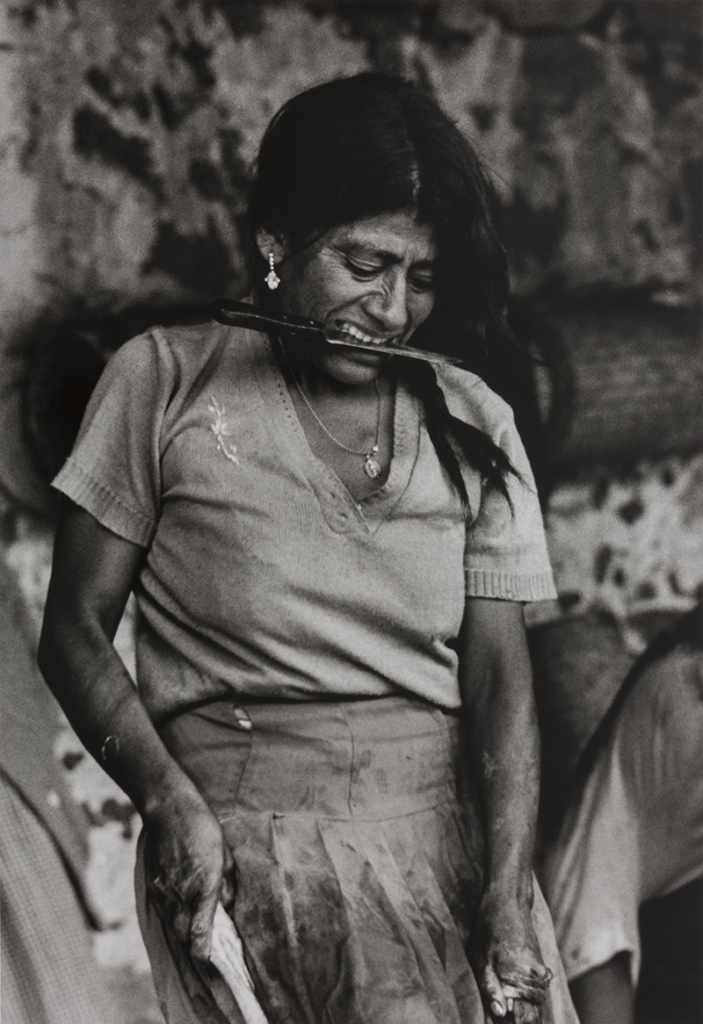One of the most influential contemporary photographers of Latin America, Graciela Iturbide has produced majestic and powerful images of her native Mexico for the past 50 years. Graciela Iturbide’s Mexico is the artist’s most extensive U.S. exhibition in more than two decades, comprising 140 black-and-white prints that reveal the artist’s own journey to understand her homeland and the world.
Photography and its ritualistic qualities, observation, development, and selection, is a form of therapy for Graciela Iturbide. More than simply documenting moments in time, the practice offers her a way to process and understand the world. As Iturbide trained her lens on the people, cultures, and rhythms of life in Mexico, she developed an interest in capturing the rituals of others. From cultural celebrations to religious ceremonies, Iturbide’s photographs present poetic and unflinching looks at the customs people enact in search of order, comfort, and meaning.

La Matanza/The Slaughter
Iturbide’s documentation of the annual festival and goat slaughter in La Mixteca, Oaxaca, is a potent example of a cultural practice with many layers of ritual. The more than 200-year-old slaughter, which lasts for 20 days each October and kills tens of thousands of goats, was brought to the region during the Spanish conquest. La Mixteca is one of the poorest regions of Oaxaca and its people endure harsh working conditions and treatment. The slaughter represents a break from daily hardship and is significant for the Mixtec economy, as the goat meat is sold in local, national, and international markets.
Iturbide immersed herself with the Mixtec people to document the nuances of the slaughter: the human and animal sides; the violence and repentance. In La felicidad, la matanza (Happiness, the Slaughter) (1992), a young girl sits and smiles on a mat next to a dead goat, her hands kneading its back. In Carmen (1992), a woman wrangles a goat, whose legs are visible in the photograph. The expressive grip of her teeth on her well-worn knife expresses the extraordinary and painstaking physical effort of the slaughter. And each year, in a ritual of atonement for the thousands of slaughtered goats, one goat is saved. Its head is adorned with a flower crown, as shown in Iturbide’s photo La danza de la cabrita, antes de la matanza (The Little Goat’s Dance, Before the Slaughter) (1992), and the Mixtec dance around it in celebration.
Iturbide’s own photographic ritual was adapted for this project. She described using her camera as a shield from the violence. She said, “I had to enter a guiding trance to see quickly, to photograph quickly, to not interrupt their work…the trance helped me forget the pain of the goats and the pain of the Indians.” Iturbide’s stay with the Mixtec would be the last time she ever immersed herself in an indigenous community—the experience deeply affected her. However violent this ritual, though, Iturbide recognizes its profound importance for the Mixtec. She has said that rituals are “the only way we forget every day.”
*Unless otherwise noted, information is adapted from Graciela Iturbide’s Mexico: Photographs, by Kristen Gresh, with an essay by Guillermo Sheridan.
